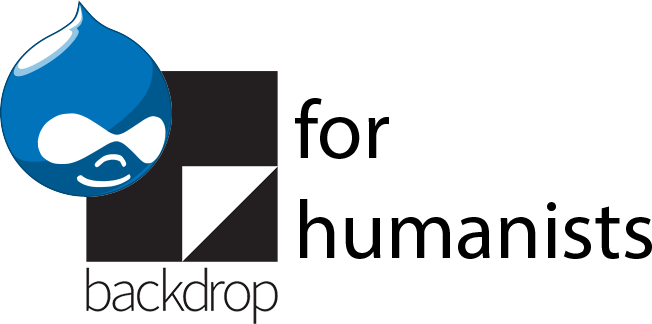Drupal compared to Omeka
Omeka was developed by the Roy Rosenzweig Center for History and New Media at George Mason University, and is designed specifically for scholars, librarians, and museum and archive professionals to create digital exhibits. Omeka incorporates standards used by these communities, such as Dublin Core, for storing metadata about objects, whereas with Drupal, users would have to specifically design their data model to be compatible with Dublin Core.
Omeka allows users to create items, add metadata about them, and organize them into one or more exhibits. Compared to the large and robust ecosystem of extensions available for WordPress and Drupal, the list of plugins available for Omeka is fairly modest, but they all tend to be relevant for scholarly projects. One of the best-known extensions for Omeka is Neatline, developed by the Scholars’ Lab at the University of Virginia. Neatline enables the integration of maps and timelines with Omeka exhibits. Scripto, a tool for crowdsourcing transcription, is also only available for Omeka.
If the metadata that your project needs to capture is compatible with the fairly standard set of fields available in Omeka (e.g. title, subject, creator, description, source, etc.), if you can meaningfully organize the data into exhibit-like collections, and if one of the Omeka-only plugins is exactly what you need for the project, it is a very user-friendly option, and there’s also a hosted service available at a humanities-friendly price. Omeka is also a great option for including something about content management systems as part of a digital humanities survey course, as its ease of setup and use makes it very accessible to students with minimal training. For more complex projects, or those where the data doesn’t fit well into the item / exhibit paradigm, or that require a different set of metadata, Omeka lacks the user-configurable customization options to easily support projects outside its defined scope.
